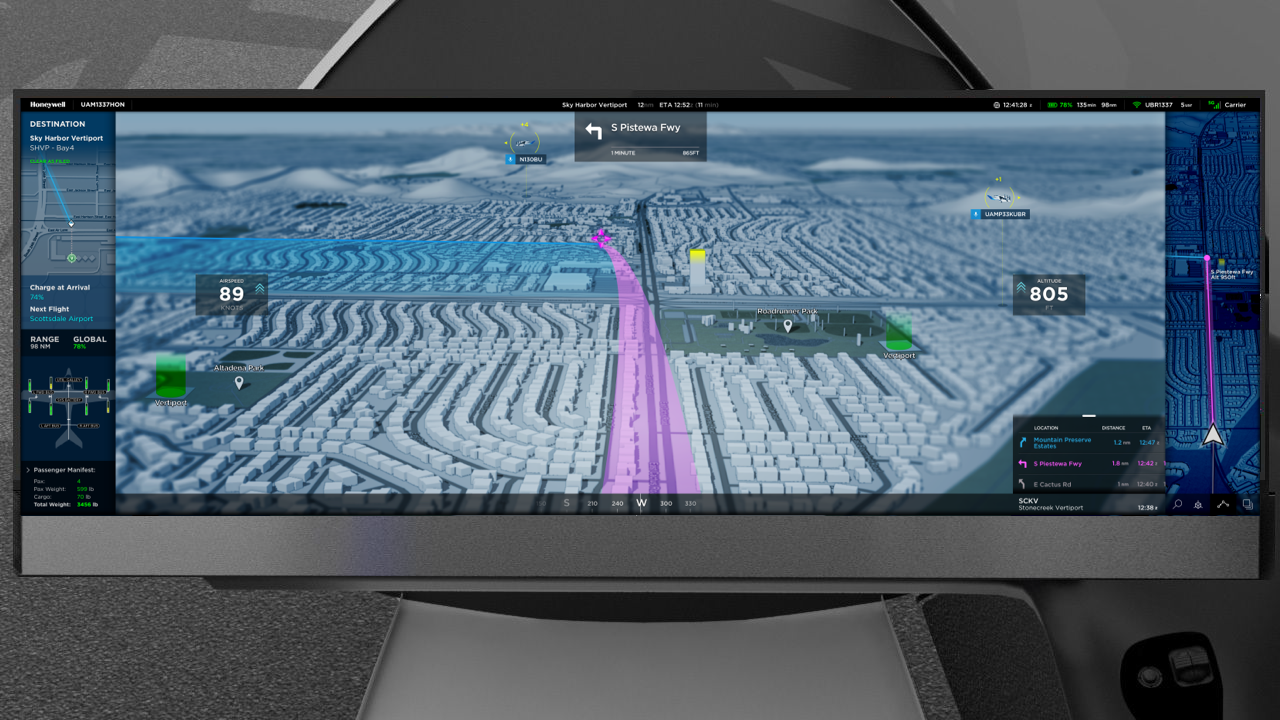Click Here to View This Page on Production Frontend
Click Here to Export Node Content
Click Here to View Printer-Friendly Version (Raw Backend)
Note: front-end display has links to styled print versions.
Content Node ID: 418906
Honeywell Aerospace shares the commonly held view that the growth of the advanced air mobility (AAM) sector could be impeded by a shortage of pilots to fly the new-generation of eVTOL aircraft. It’s looking to address this hurdle by rethinking the functionality and purpose of the flight deck as part of an effort to safely simplify operations.
“If you are going to scale up operations for applications like air taxi services, you will need a lot of pilots or operators [for the eVTOL aircraft], so we need to shorten the training curve so that they can learn, fly, and stay current,” said Stephane Fymat, vice president and general manager of Honeywell’s new Unmanned Aerial Systems division, which is leading the U.S. group’s efforts to achieve a leadership position in the fast-evolving AAM sector. “Our vision is that we have to get these vehicles to be increasingly autonomous, so we need to automate more of the functionality that is now exposed to the pilots.”
Honeywell’s response to this challenge is taking shape in its new SVO-Bravo prototype flight deck, with SVO standing for Simplified Vehicle Operations and Bravo being an internal name for a project that will likely be rebranded when it goes to market. “We don’t need to show as much data on the screen [as with current aircraft flight displays], but rather than this being the result of automation, it can be a tool of automation, helping us down the road to [operational] autonomy via automation,” he explained, outlining the design philosophy for the new product.
Several eVTOL aircraft programs are now reaching the point of selecting key systems such as flight decks, and the start-ups behind many of these will likely turn to established avionics specialists rather than try to develop this equipment in-house. Earlier this month, Joby Aviation selected Garmin’s G3000 integrated flight deck for its all-electric eVTOL, which is mainly intended for air taxi service.
Garmin turned heads when it introduced this technology back in 2009 and it has plenty of operational experience on numerous business aircraft. But what Honeywell has in mind is a markedly different approach. Fymat told FutureFlight that its flight deck should make it as easy for pilots to adapt to new aircraft as it is for drivers to jump into an unfamiliar rental car.
Honeywell is already working with aircraft developers on the SVO-Bravo concept and doesn’t yet have a fixed timeline for it to enter service. The company expects the concept to be standard across its next generation of avionics suites, with type-specific iterations tailored to individual aircraft.
This isn’t the company’s only offering for the AAM’s innovative new aircraft. Also in the works is compact fly-by-wire technology to accommodate the limited real estate in eVTOL designs and the need for operational flexibility and simplicity.
Engineering teams at the group’s new research and development laboratory in Phoenix also have been working on collision-avoidance systems using a compact radar that can function in any conditions and with significant range. Using algorithms to analyze the radar data, the system will identify flight paths to avoid.
In the realm of propulsion, Honeywell is actively working on both electric and hybrid-electric powertrains, including the use of auxiliary power units in some instances. Its thermal management specialists are focused on the challenges of delivering lightweight cooling systems for both the propulsion hardware and aircraft cabins.
Honeywell is already a named partner for UK-based eVTOL developer Vertical Aerospace and is working with Slovenian electric aircraft pioneer Pipistrel. In late 2019, it acquired an undisclosed stake in artificial intelligence specialist Daedalean, which is closely focused on advancing autonomous flight technology for the AAM sector.
